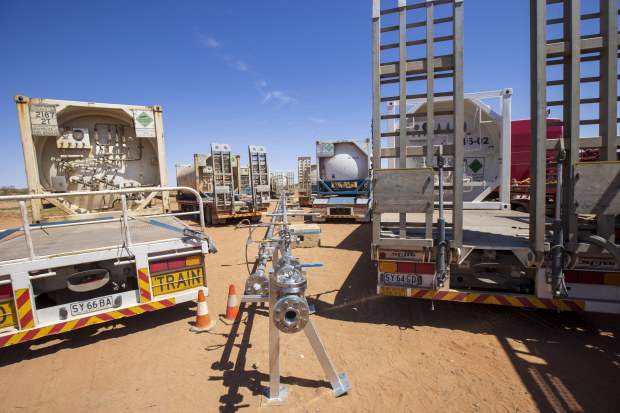Opinion

Green claims to be put under microscope
Angela Macdonald-SmithSenior resources writerCompanies can expect scrutiny of their climate claims and targets will only intensify, with oil and gas producers right in the firing line.
While sensitivity around greenwashing claims has been mounting for many months, it is now moving to another level as ESG issues shoot up the agenda for investors, lenders and other stakeholders, and green credentials start to have a monetary value.
“We are moving into an environment where environmental performance has now got a financial value, and [that] means you bring a whole new level of scrutiny to performance claims that are being made to the market,” says Emma Herd, EY’s new partner, climate change and sustainability.

How a CCS-based credit is valued in the carbon market has yet to be tested.
After almost six years heading up the influential Investor Group on Climate Change, Herd is well placed to assess what’s on the mind of investors as they pore over green claims and performance towards targets, whether on net zero emissions, 100 per cent renewables, carbon offsets or energy efficiency.
Regulators have already been particularly active, whether in the case of financial reporting, financial products labelling or documentation for capital raisings or loans.
“More broadly you are seeing this push for consistency around definitions and frameworks and measurement tools is happening really fast,” Herd says.
“A lot of that is in response to this core underlying driver that environmental performance has risks and it has implications for financial value, and that requires a whole new level of rigour.”
Most recently, Tamboran Resources was put through the wringer by the Australian Securities and Investments Commission over its commitment in the prospectus for its $61 million IPO to be a net zero emissions gas producer from the outset.
ASIC required the Northern Territory gas explorer to remove references in the prospectus to clean and potential production and add detail on its net zero pledge, which Tamboran CEO Joel Riddle says was a key element behind the success of the float with today’s market super-focused on ESG.
Riddle counts Tamboran’s ability to go through the process in a timely manner and measure up to the grilling as a success, and says the company has led the way for other oil and gas producers that will face similar examination.
“We were tested quite considerably by ASIC on our business plan and our vision around being net zero,” Riddle says.
“Right now we’re the 13th-largest oil and gas company in Australia. When I look at the other top 13 companies I don’t think any of them has gone through the level of scrutiny we have gone through ... so that is coming. That is coming for a lot of these players.”
Santos’s net zero aspirations by 2040 for direct emissions are already attracting more examination, particularly given its intention to use carbon capture and storage to help get there.
The oil and gas producer’s $210 million CCS project at Moomba in South Australia’s north still hinges on the controversial technology being made eligible to generate Australian Carbon Credit Units. The federal government’s formal proposal to include CCS under the Emissions Reduction Fund went out for public consultation last week.
Just how much CCS-based credits would be worth outside the ERF still has to be tested in an offsets market that is already characterised by a huge range of prices for the same result: one tonne of CO2 avoided or reduced.
Chris Halliwell at TFS Green, the country’s largest ACCU and carbon transaction firm, points to a high level of discretion among many buyers who want their credits to have strong environmental or community benefits beyond one tonne of carbon.
For them, CCS-based credits won’t match up because they will be considered as providing a revenue stream that supports the continued use of fossil fuels.
Similarly, Herd says the challenge with CCS credits is they are likely to be considered at best a short-term solution that enables the continuation of high-emitting industries, whereas the real goal has to be drawing down additional emissions from the economy.
More broadly, Herd says, fossil fuel companies can expect examination of their claims not just with respect to “greenwashing” but also “greenwishing”, where aspirational targets are set without any clear indication of how they will be achieved.
Whereas the latter may be better intentioned that the former, it can be just as problematic. It’s not that targets 20 or 30 years out are not useful, but that actions over the next five or 10 years towards reaching those goals need to be clearly measured and verified.
That’s been clear in the increasing focus among investors and activist shareholder groups on capital allocation, as evidence that a company’s business strategy is indeed aligned with its climate goals, and is particularly important in energy-intensive sectors such as oil and gas.
Herd says investors want proof that when a company says it is investing in carbon capture, new energies such as solar or nature-based offsets, its spending is aligned with those aspirations and backed by a robust implementation plan.
The mentality is “convince us you are heading in that direction, and not just saying you’re going to get there in 2049”, she says.
Subscribe to gift this article
Gift 5 articles to anyone you choose each month when you subscribe.
Subscribe nowAlready a subscriber?
Introducing your Newsfeed
Follow the topics, people and companies that matter to you.
Find out moreRead More
Latest In Energy & climate
Fetching latest articles